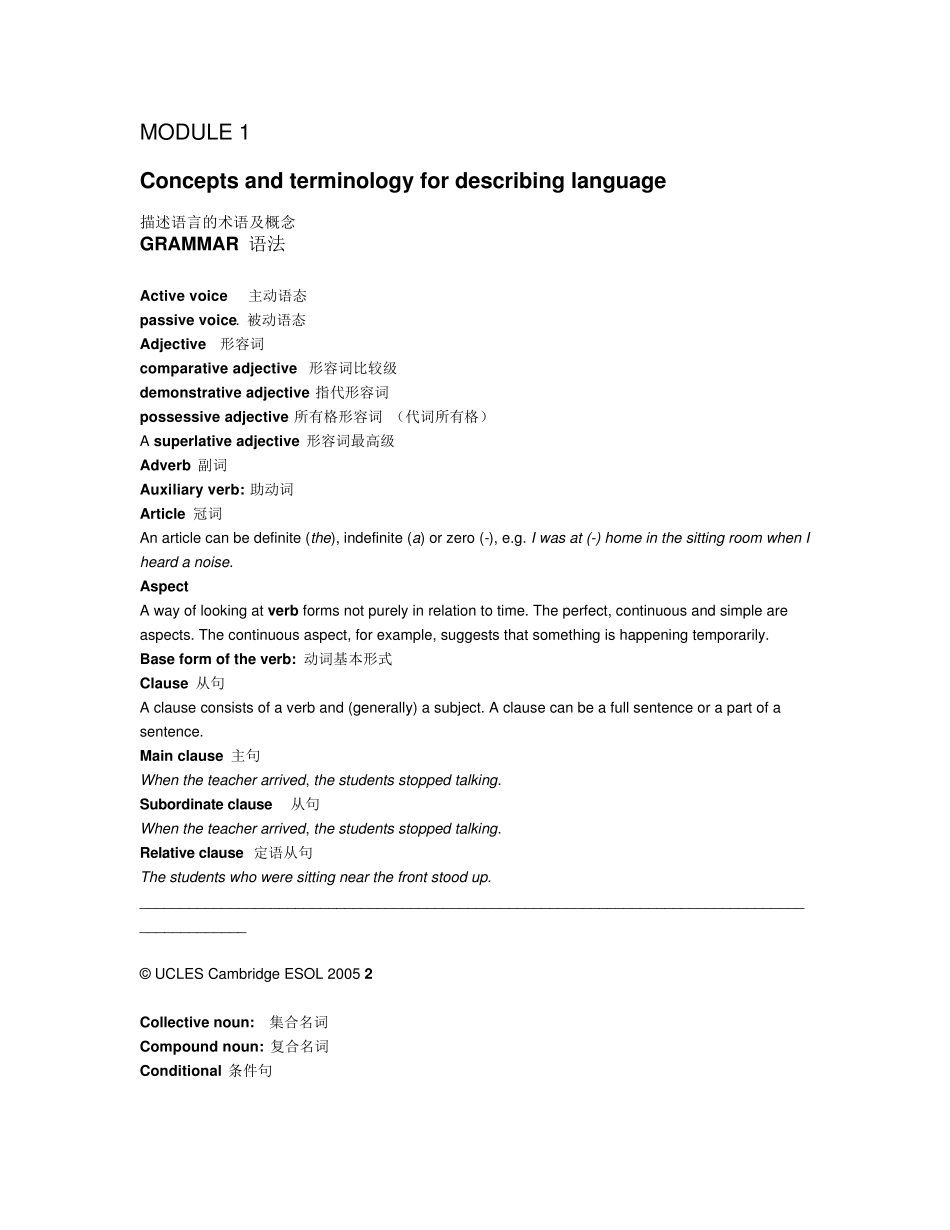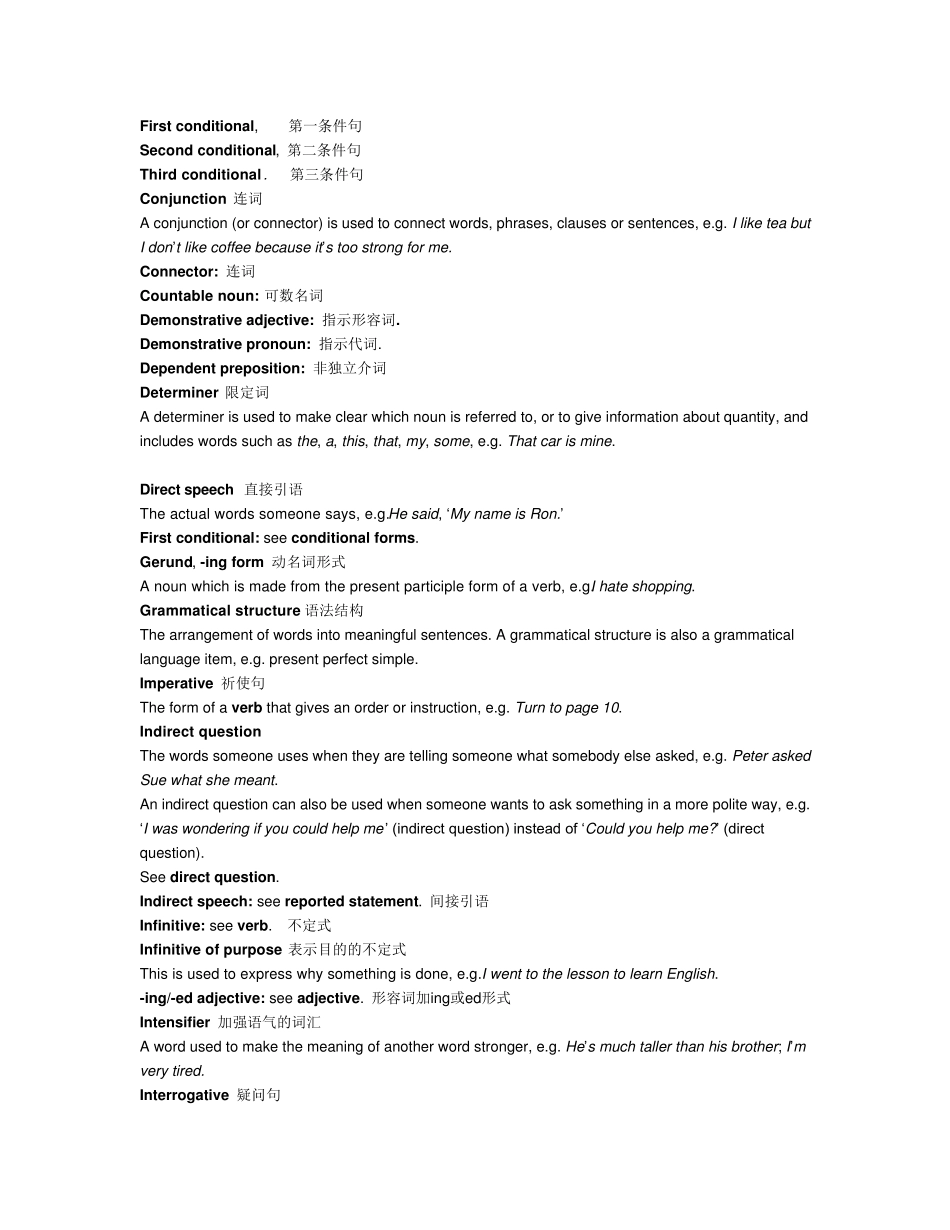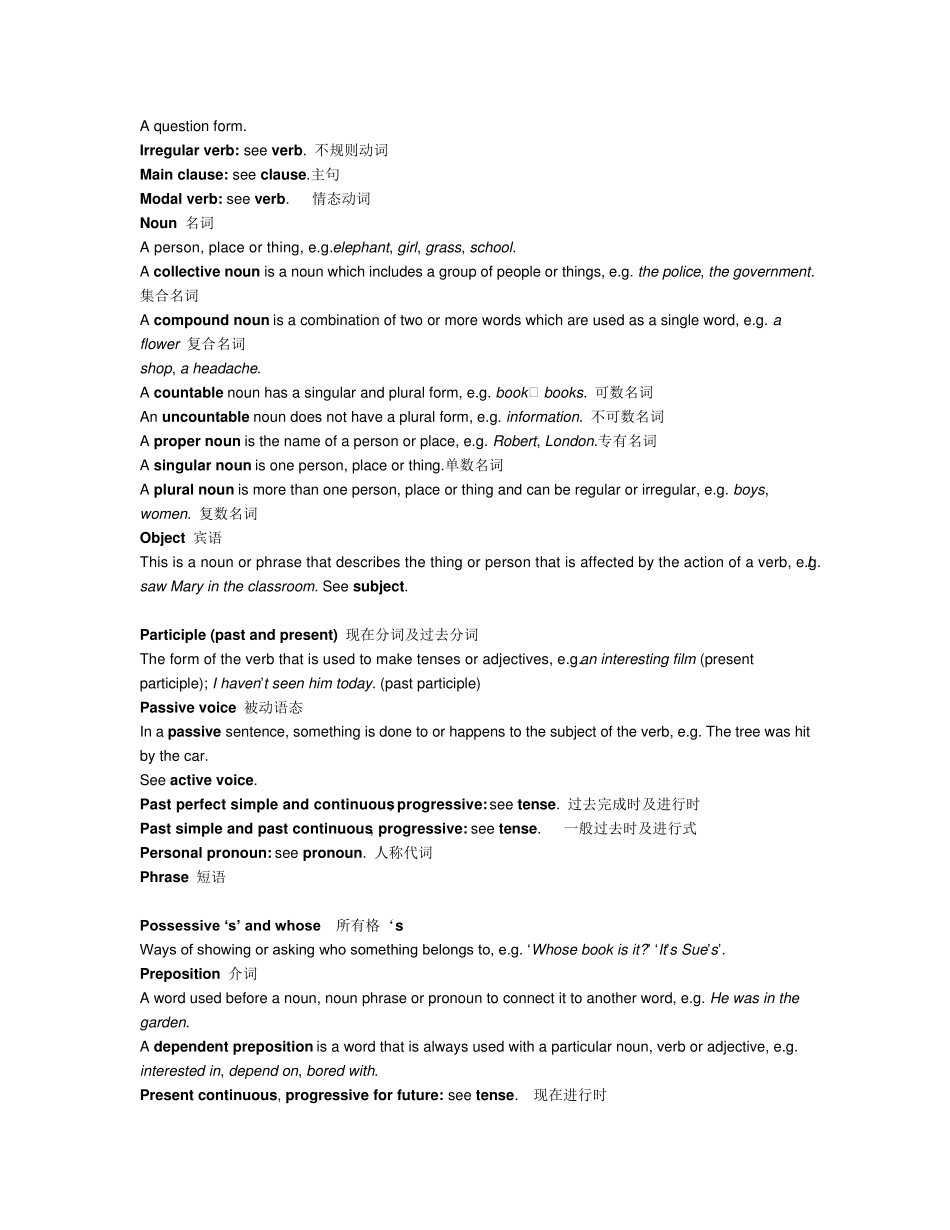MODULE 1 Concepts and terminology for describing language 描述语言的术语及概念 GRAMMAR 语法 Active voice 主动语态 passive voice. 被动语态 Adjective 形容词 comparative adjective 形容词比较级 demonstrative adjective 指代形容词 possessive adjective 所有格形容词 (代词所有格) A superlative adjective 形容词最高级 Adverb 副词 Auxiliary verb: 助动词 Article 冠词 An article can be definite (the), indefinite (a) or zero (-), e.g. I w as at (-) home in the sitting room w hen I heard a noise. Aspect A way of looking at verb forms not purely in relation to time. The perfect, continuous and simple are aspects. The continuous aspect, for example, suggests that something is happening temporarily. Base form of the verb: 动词基本形式 Clause 从句 A clause consists of a verb and (generally) a subject. A clause can be a full sentence or a part of a sentence. Main clause 主句 When the teacher arrived, the students stopped talking. Subordinate clause 从句 When the teacher arrived, the students stopped talking. Relative clause 定语从句 The students w ho w ere sitting near the front stood up. ______________________________________________________________________________________________ © UCLES Cambridge ESOL 2005 2 Collective noun: 集合名词 Compound noun: 复合名词 Conditional 条件句 First conditional, 第一条件句 Second conditional, 第二条件句 Third conditional . 第三条件句 Conjunction 连词 A conjunction (or connector) is used to connect words, phrases, clauses or sentences, e.g. I like tea but I don’t like coffee because it’s too strong for me. Connector: 连词 Countable noun: 可数名词 Demonstrative adjective: 指示形容词. Demonstrative pronoun: 指示代词. Dependent preposition: 非独立介词 Determiner 限定词 A determiner is used to make clear wh...


